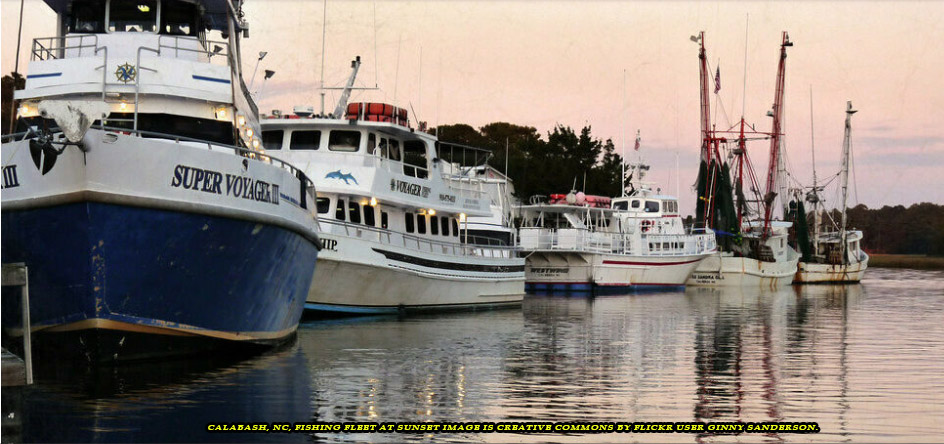Once again, the regulators have failed to preserve our fisheries resources

Kelly Lester, writing for the Caolina Journal reports:
Attention anglers: Today, Sept. 15, marks the official beginning of flounder fishing season. Unfortunately, the sport may not be as exciting this year as it has been in the past, because of an exceptionally restricted fishing season and strict quotas set by both the Marine Fisheries Commission (MFC) and the secretary of the Department of Environmental Quality. Consequently, local communities that rely on the fishing industry may see economic downturns, and consumers will be forking out more for the popular fish.
North Carolina’s wild-caught fishing industry is valued at $300 million and employs 5,500 North Carolinians, making it a vital source of revenue for coastal communities. Flounder, a flat fish with a light, mildly fishy taste that lives on the ocean floor, has long been a large contributor to the demand for wild-caught fish along the entire East Coast. According to the Marine Fisheries Commission, however, this highly demanded fish has seen dramatic declines in population over the past few years.
The supposedly dwindling flounder population, attributed in part to overfishing according to the MFC, has elicited a range of responses from our officials, including the implementation of reduced fishing seasons and quotas for both recreational and commercial fishermen. While the overarching goal is to foster the recovery of the flounder population, which is said to require a substantial 72% reduction in fishing activity to stabilize, it’s worth questioning whether these measures might disproportionately affect small-scale fishers and exacerbate economic disparities.
This flounder fishing season, anglers are facing a sharply abbreviated window of opportunity, spanning just two weeks (ending Sept. 29) — in stark contrast to previous years when the season extended for a full month. This reduction raises valid concerns about its economic implications for local businesses reliant on fishing tourism and seasonal trade, as well as the overall affordability of flounder for consumers. While the stated intention is to fortify the flounder population and ensure its long-term sustainability, we should approach such interventions with a degree of skepticism, considering their potential inadvertently to strain coastal communities economically.
Furthermore, the 2023 flounder season maintains a strict, one-fish per person per day creel limit and a minimum size requirement of 15 inches. These restrictions cast a shadow over the once-vibrant angling culture that thrived along North Carolina’s coast. For some anglers, the prevailing sentiment is one of frustration as they navigate a landscape of shifting regulations and uncertain economic prospects.
Anglers are even more upset and confused because the Wildlife Resource Commission (WRC) has decided to set its own rules for the inland waters they oversee. While the WRC allows recreational fisherman four flounder per day, anglers are scared to keep more than one because of jurisdictional confusion: some waters are overseen by the MFC, and some are by the WRC, and some are jointly overseen.
Adding to the complexity, as the state grapples with declining flounder populations, it continues to push for the development of offshore wind farms. Flounder inhabit both shallow and deep waters, making it uncertain whether building in the ocean will further hinder their populations. Some may even find it suspicious that fishing is severely limited prior to construction.
If there has been overfishing, who’s to blame? Recreational fishermen blame commercial fishermen, and vice-versa. But if the recreational fishermen say they aren’t doing it, and the commercial fishermen say they aren’t doing it, then who is? Our waters didn’t suddenly reach a point where we need a 72% reduction in flounder caught. It also seems unlikely that this drastic decline in flounder population is just now a problem. Why were limits not better enforced in the past if populations were declining?
The emerging reality of flounder fishing, characterized by shorter seasons and tightened limits, prompts us to question how well state officials are managing the delicate balance between environmental conservation and the economic well-being of coastal communities. Furthermore, the conservation efforts may appear counterproductive in light of a government actively promoting the construction of wind turbines in the ocean. The outcome of this intricate balancing act will undoubtedly shape the narrative of North Carolina’s flounder fishing season, affecting not only the fishing industry itself but also the intricate tapestry of coastal economies and communities.
Kelly Lester is a policy analyst at John Locke’s Center for Food, Power, and Life, primarily researching agriculture. Before joining Locke, Kelly was a research associate at the Cato Institute, focusing on poverty and welfare.
Editor’s commentary: We believe Kelly has raised some very pertinent questions in this piece, but we believe the most serious questions relate to the validity and reliability of the data that the State uses to make these draconian rules. The long and short of this issue is that the State has no way to verify how many flounders are in our coastal waters. Common sense would tell you that the issue is not how many fish are caught, but how many are NOT caught. The sampling techniques do not make sense, any more than estimating the bushels of corn raised by going into few corn fields and counting the number of ears on a small sample of the corn in that field and then extrapolating that number to all of the corn raised.
What is for certain is that if the number of fish left in the water after the season ends declines then fewer fish will be caught next year. The fact is fisheries management is an inexact science. The State cannot show a single species that has been “saved” by the strict rules it has used. Kelly touches on it, but somebody should ask the simple question: Is fishing the cause of changes in the total population? Maybe it is something else, including habitat or even water quality. We find it more than ironic that many of the same people who are alarmed about fish are the same folk who think climate change will be the death of us all.
It is ironic that the State has no solid “cause and effect” data to show that a specific variable is what causes the fluctuations in total fish populations. Why do they never point to any “successes” that their practices have produced?
If you doubt the validity of such questions, you should study the River Herring. It is the singular most regulated fishery over the longest span of time of any species. And the landings have continued to decline. In other words, the management approach failed.
What is not in doubt is that the Division of Marine Fisheries and the Wildlife Commission have effectively killed a time-honored traditional industry since pre-historic times. Need we remind our policymakers that it was not long ago that we were being told if we ended shrimp trawling in the sounds that would fix the problem. It has not. But what is not in doubt is that these regulators have decimated the fishing industry. We suppose they had to destroy it to save it. Ya think?
Comments
|
One of the big threats to fishing are the offshore wind turbines that Biden and Cooper are pushing. For a bottom swelling fish like a flounder, the power cables from wind turbines present a major threat, as they do to crabs, lobsters, and other sea creatures. Wind turbines are already causing whale deaths.
|
| Is it the Twilight Zone or Another Foggy Bottom? | Editorials, Beaufort Observer, Op-Ed & Politics | Auto CEOs Struggling With Whether To Replace Striking Workers With Robots Or Mexicans |






















A nation that cannot feed itself cannot defend itself. When will the NC GA wake up and move the DMF from DEQ to Dept of Ag to be treated like the food producing industry it is and has always been.